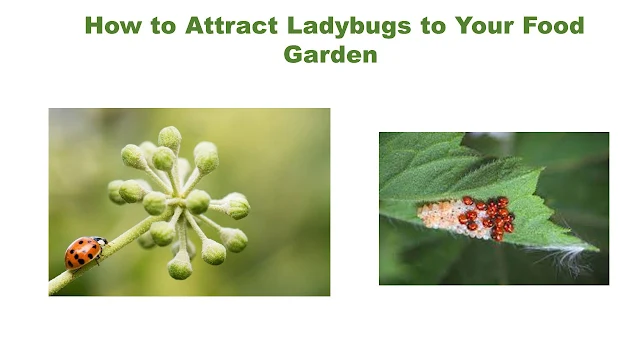Attract Ladybugs to Your Garden
Ladybugs aren't the only pretty face in flowers. They help control pests. Find out now how to attract ladybugs to your garden. I imagine that at some point most gardeners have wondered how to attract ladybugs to their food garden. I know. These cute little beetles are stunning with their bright red wings and black spots, especially when they land on a bright yellow squash blossom. I could be wrong, but I'm guessing ladybugs are the most popular bugs.
The ladybug is the state insect of seven US states. (It's tied with the monarch butterfly for second-most state insects. The European bee has won 14 states.) Ladybug umbrellas, stuffed animals, children's books, metal ladybug garden decor, clothing, coffee mugs, welcome mats, and even the 1992 movie "Ladybugs" have Of course, when it comes to gardening, we're looking for more than just something pretty. Deer are beautiful. Skunks are cute. Rabbits are cute. They will eat your strawberries, your dill, your cucumbers, and anything else they can get their hands on. What is so special about ladybugs and why do we want to know how to attract ladybugs to the garden?
Sure, ladybugs are cute—unless you're an aphid.
Ladybugs, also known as lady beetles or ladybird beetles, are seemingly harmless insects. They don't eat our tomato leaves and chew our pea stalks. In fact, they are harmless to humans. It's a different story for aphids and other soft-bodied insects. Ladybugs primarily feast on aphids, although mites, whiteflies, mealybugs, and scale are also on the menu.
Worldwide, there are an estimated 5,000 species of ladybugs, with about 450 species found in North America. So while the "typical" ladybug is red with black spots, you may find orange, yellow, or black ladybugs. Larvae that feed on aphids have been described as "alligator-like" because of their elongated and "squishy" appearance.
Both larvae and adult beetles are highly mobile and migrate in search of food. Depending on the species, ladybugs can consume 50 or more aphids a day, and somewhere around 5,000 aphids in their lifetime.
How to Attract Ladybugs
A food garden relies heavily on pollinators such as bees and butterflies. Lucky for us, if you're in the business of attracting these helpers to your garden, you already know how to attract ladybugs.
Ladybugs, like bees, love native flowers and plants. Flowering herbs like dill, cilantro, and mint attract ladybugs, as do sunflowers and alyssum. Other flowers like marigolds and nasturtiums (delicious in salads!) attract aphids, which keeps them away from your food crops and a food source for your ladybugs. Additionally, do your best to eliminate pesticides. While pesticides are effective in ridding your garden of insects, they also kill predatory and pollinating insects such as bees and ladybugs. Additionally, a healthy garden that takes advantage of companion planting, good soil practices, and native plants can easily withstand most pests.
If you're feeling particularly ambitious or crafty, you can even build a pollination hotel! And if it's hot and dry, it's helpful to make sure your ladybugs (as well as bees and birds) have some water.
It's actually quite easy.
















0 Comments